In Kenya’s Aberdare National Park, you can tip-toe the muddy churn and felled trees of elephant trails, sneak past bedded Cape buffalo, and crouch to cast into remote stretches of cold stream that’re barely wider than your wingspan. Limbs link to form arches overhead. Lichen and ferns cling to steep, lush, towering banks. And, there, you’ll find the progeny of Scottish trout that have been breeding mostly unmolested since 1905.
My buddy John and I had made this trip—armed with a couple of 5 weights and dry flies—and split a hundred feisty little rainbows. So, I counted the days until we could do it again with the ECHO River Glass 2 weight.
Then COVID. A phone call. And a few hours later we were on a plane with a couple bags each evacuating Kenya. Some hours after that we were the only plane landing at JFK.
So, the trout would have to wait. And, I thought fly fishing would, too, even though I was surrounded by Virginia’s streams and backwaters. Months later, a discovery: the ECHO had stowed away in the bottom of my roller bag.
So, instead of casting little dry flies to the lips of greedy rainbows, the ECHO River Glass and I found ourselves with my 5-year-old daughter in a used Old Town canoe on a small spring fed lake with schools of sunfish patrolling the film.
A short, smooth cast. The little popper settles. A slurp. A doubled-up rod. And the first of many sunnies and cheers from my fishing partner. There was nothing exotic about it, but if ever there were a better homecoming, I certainly don’t know what it would be.
Now after a few weeks of fishing the ECHO—and more sunnies and little largemouth and giggles than I deserve—I can tell you about the rod. Understanding that fly anglers are mostly trout bums, I’ll also tell you how the rod could fit into a trout game in the Aberdares or elsewhere:
What works
It packs up small and sturdy
Trout fishing and travel go hand in hand; so the size of the ECHO River Glass and carrying case are pluses whether you’re walking into a stream or flying to the other side of the world. The rod breaks down to three pieces and tucks nicely into a sock and a Cordura covered hard-shell tube case that—swung well—could break up a robbery. It’s sturdy and only as big as it has to be. So, it’s a solid travel partner.
It’s a smooth operator
The slow, smooth action is forgiving. And all of us—fanatics, weekend warriors, and newbies alike—could all use a little forgiveness these days. So whereas a lapse of skill with a fast rod might sling a fly in and spook a skittish fish in a shallow lie, the fiberglass mitigates some of those mishaps as it loads more easily and slows things down a bit to help that fly alight more naturally. And, at 2.4 ounces, you can cast it all day.
A note on this rod for folks new to fly fishing: The River Glass—as with other new fiberglass rods on the market—has an action that helps you feel the rod load and unload. That ability to feel the cast can help you refine your casting and it can lay a solid foundation before moving up to big, fast rods and heavy flies.
Every fish is a rod shaker
Even the smallest fish puts a bend in the rod that will excite a new angler and remind you why you started fishing in the first place. And when you hook into a fat bluegill or a feisty little brookie, the rod will bend like the Gateway Arch. It is fun. And, sure it’s great to chase big reds on the flats or steelhead in weather so cold that the guides freeze up, but sometimes it’s just fun to go and catch fish on an ultralight rig.
Ideal for short casts and tight spaces
Creeks, branches, brooks, and backwaters—whether they hold trout or hot water fish—can present the same challenges: small water, unforgiving targets, low overhangs, high or tangled banks, and so on. And, these obstacles can make for a rough day of casting with, say, a 9’ 5 weight. So, the length of the ECHO River Glass is a real plus. The 6’9” rod on the 2 weight makes casting easier and lets you focus less on obstacles and more on fish. The rod makes full-speed, short casts smoothly and easily to give you all you need.
Appearance
ECHO’s River Glass comes in two very different colors. The Amber version is classic and understated for those of us who like to blend in. The Glacier blue is striking and it may have particular appeal to folks who are just getting into fly fishing. The rods are handmade and hand painted and the inclusion of alignment dots for those of us who don’t see straight is a nice touch.
Price
ECHO's River Glass is fairly priced in the middle of the pack for fiberglass rods in its class, comparable to the Redington Butter Stick. Most importantly, that price buys a quality rod and a strong warranty.
Lifetime Warranty
Things go wrong, even for well-made rods and mindful anglers. And, when they do it’s good to have a warranty. ECHO has a lifetime warranty that some have called one of the best in the industry. That $250 is an investment, but it buys some peace of mind, too.
What Doesn’t
You could probably find someone who’d criticize something about the rod, old men shake their fists at the sky every day.
Final Word
The ECHO River Glass is a sweet little rod. It’s a specialized tool ideal for short casts with light tippet and small top water/dry flies to small fish in small water. And, it does the hell out of its job. I’ll be fishing it for years on trout streams and farm ponds alike. If you’re looking to build out your fly arsenal with more specialized offerings, ECHO's River Glass is worthy of your attention.







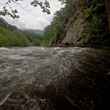



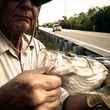
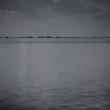




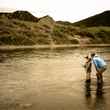



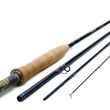





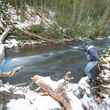

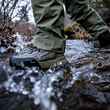

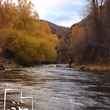

Comments